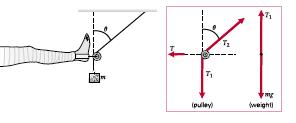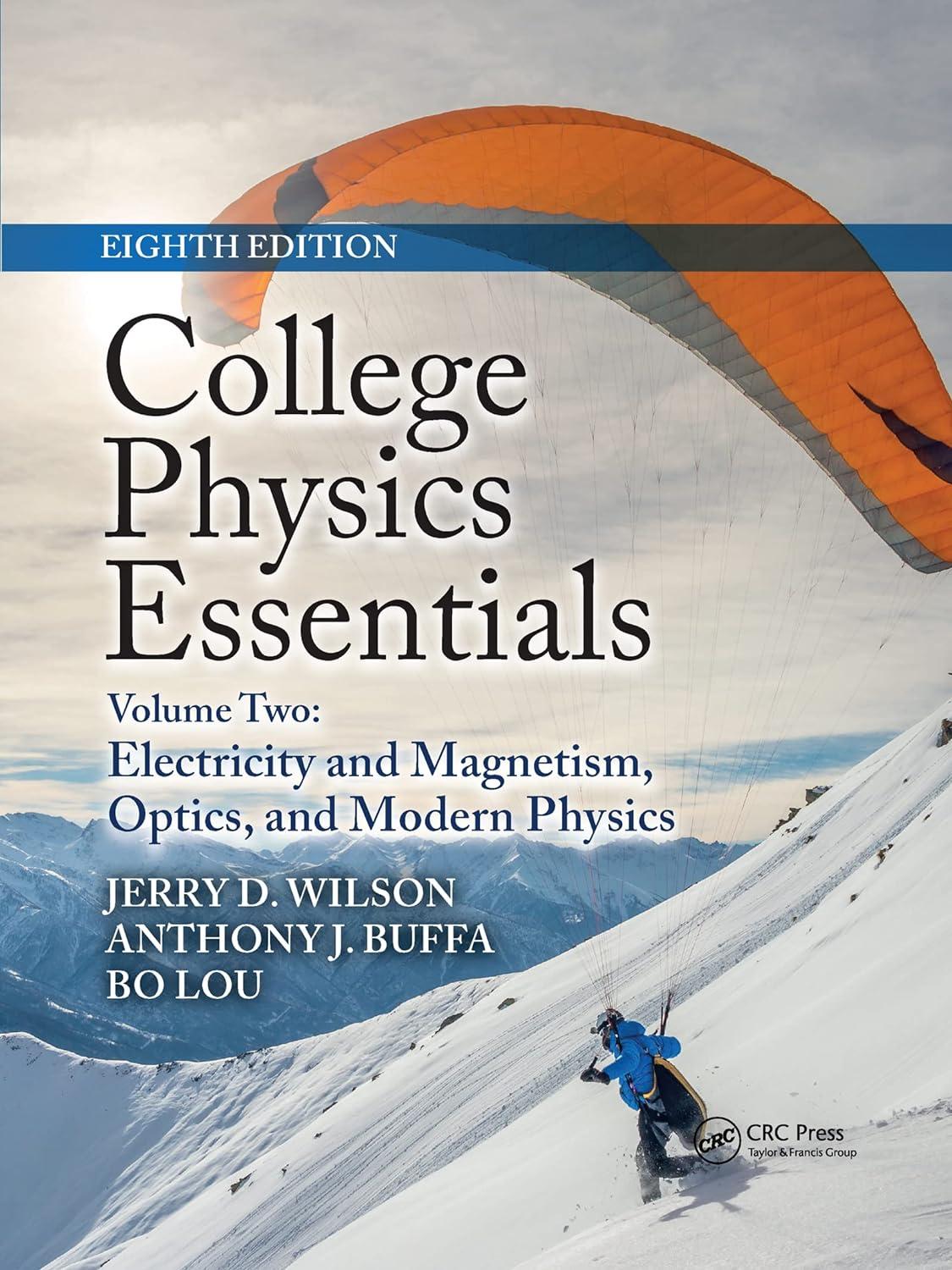Keeping a broken leg bone straight while it is healing sometimes requires traction, which is the procedure
Question:
Keeping a broken leg bone straight while it is healing sometimes requires
traction, which is the procedure in which the bone is held under stretching
tension forces at both ends to keep it aligned. Consider a leg under
tractional tension as shown in ▼ Figure 4.16. The cord is attached to
a suspended mass of 5.0 kg and runs over a pulley. The attached cord
above the pulley makes an angle of θ = 40° with the vertical. Neglecting
the mass of the lower leg and the pulley and assuming all the strings are
ideal, determine the magnitude of the tension in the horizontal cord. 
THINKING IT THROUGH. The pulley is in a static equilibrium
and thus has no net force on it. If the forces are summed both vertically
and horizontally, they independently should add to zero.
This should allow the tension in the horizontal string to be found.
9.An 80-kg person stands on one foot with the heel elevated
(▶ Figure 4.17a). This gives rise to a tibia force F1 and an Achilles
tendon “pull” force F2 as illustrated in Figure 4.17b. Typical angles
are θ1 = 15° and θ2 = 21°, respectively. (a) Find general equations for
F1 and F2, and show that θ2 must be greater than θ1 to prevent damage
to the Achilles tendon. (b) Compare the force applied by the
Achilles tendon with the weight of the person.
THINKING IT THROUGH. This is a case of static translational
equilibrium, so the x- and y-components can be summed to get
equations for F1 and F2.
Step by Step Answer:

College Physics Essentials Electricity And Magnetism Optics Modern Physics Volume Two
ISBN: 9781032337272
8th Edition
Authors: Jerry D. Wilson, Anthony J. Buffa, Bo Lou






